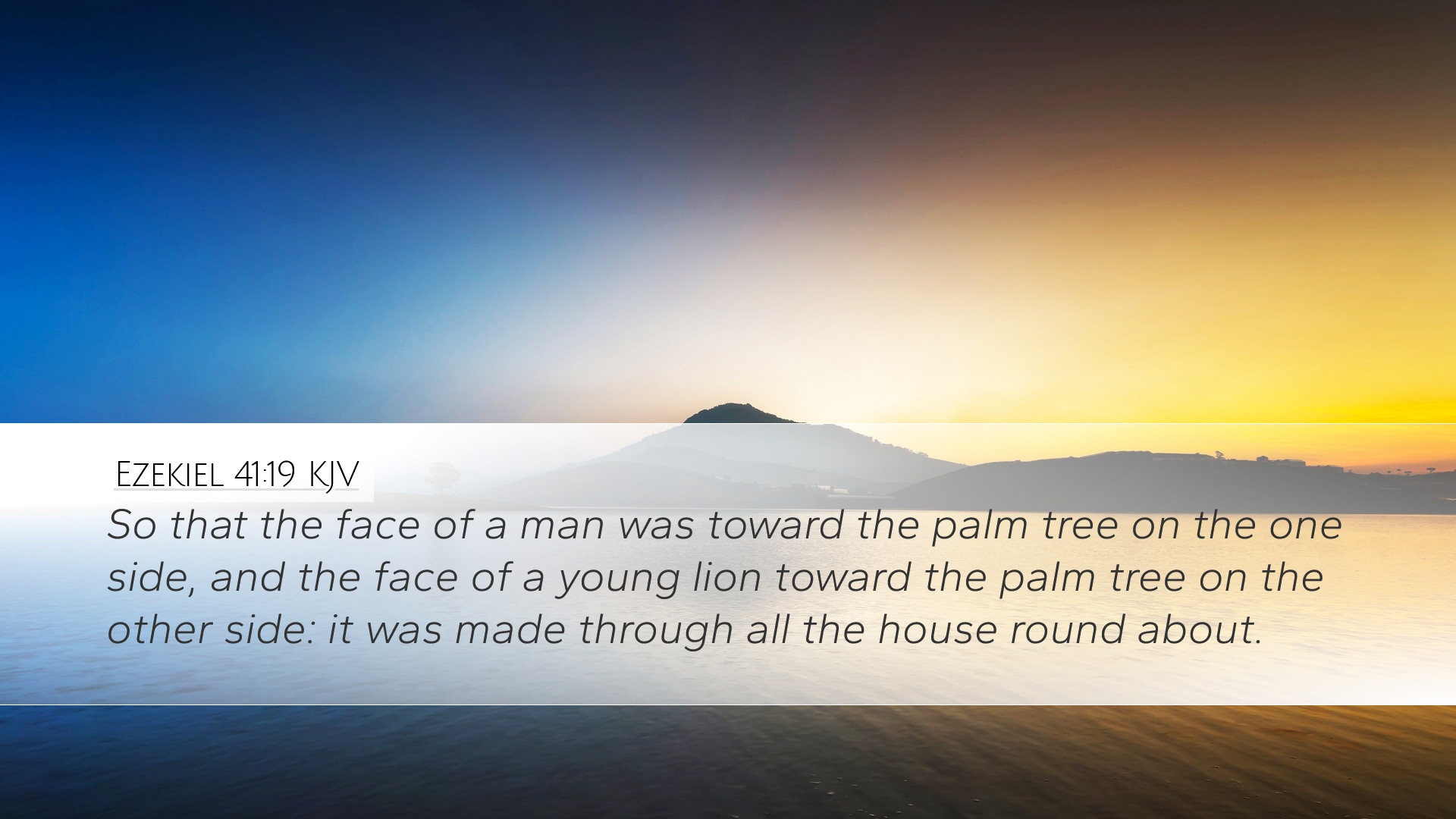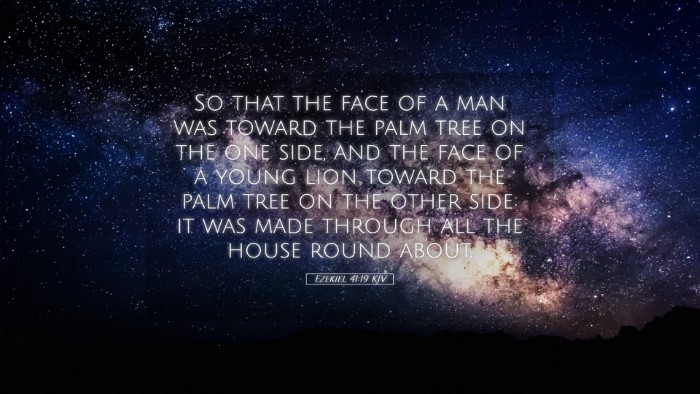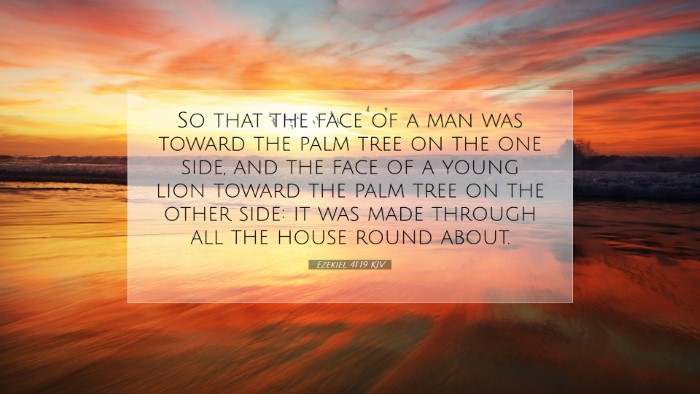Commentary on Ezekiel 41:19
Bible Verse: Ezekiel 41:19 - "The face of a man was toward the palm tree on the one side, and the face of a young lion toward the palm tree on the other side: thus was it made through all the house round about."
Introduction
The vision of Ezekiel concerning the temple represents not only a physical structure but also serves as a profound theological symbol of God’s presence among His people. This verse provides specific details about the design of the temple's inner sanctuary, highlighting both the imagery and the spiritual significance embedded in the architecture.
Thematic Insights
This commentary synthesizes perspectives from several public domain sources, offering a multi-faceted understanding of the meaning behind the imagery of Ezekiel 41:19.
1. The Symbolism of the Man and the Lion
Matthew Henry emphasizes the significance of the figures represented in the design. The face of a man symbolizes wisdom and understanding, reflecting the divine aspect of God in human form, possibly implying the thoughtful governance of the temple. In contrast, the young lion is a emblem of strength and majesty, which can be seen as representing God’s power and authority.
Henry observes that the juxtaposition of these two faces reflects the dual nature of God, both approachable as a man and formidable as a lion, which embodies the full character of God as both loving and just.
2. The Palm Trees as Symbolic Elements
Both Albert Barnes and Adam Clarke highlight the palm trees that accompany the figures in this verse. The palm tree is traditionally associated with righteousness and victory in biblical literature. Barnes states that the palm trees symbolize the flourishing of the righteous, indicating that those who dwell in God’s presence (the temple) will bear the fruits of life and joy.
Clarke further notes that the palm trees also serve an aesthetic function in the temple, representing eternity and the abundance of God’s blessings. They are a reminder of paradise, thus weaving the theme of hope and divine blessing into the fabric of the sanctuary’s design.
3. Architectural Significance of the Design
The design of the temple is intricately described in the chapters preceding 41:19. The presence of the faces and palm trees creates a harmonious architectural composition that points toward holiness and the complexity of the divine nature.
- Divine Harmony: The presence of both the face of a man and a young lion reflects the harmony between God’s grace and judgment.
- Purposeful Design: The explicit details suggest that every element of the temple has a purpose, which resonates with the idea that God desires to be present with His people in a very real and physical sense.
4. Eschatological Implications
There is a forward-looking eschatological dimension to this verse as noted by all commentators. The imagery serves as a foreshadowing of the New Jerusalem, where righteousness flourishes and God’s rule is fully manifested. This temple vision in Ezekiel can also be connected to the ultimate fulfillment of God's promises in Revelation.
According to Henry, just as the faces point toward the palm trees, this may symbolize the ultimate direction of all creation towards God’s eternal kingdom, established in peace and righteousness.
Conclusion
Ezekiel 41:19 encapsulates rich theological constructs wrapped in architectural details. Through the lenses of the human and divine, strength and grace, righteousness, and the imagery of the palm tree, the scripture profoundly invites its audience—pastors, students, and theologians—to explore deeper reflections on God's nature and the implications for worship and community within the temple setting.
This verse, like much of Ezekiel's prophecy, encourages believers to anticipate the day when God will have a dwelling among men in a world that reflects His glory, blending the sacred and the secular in a harmonious existence.


